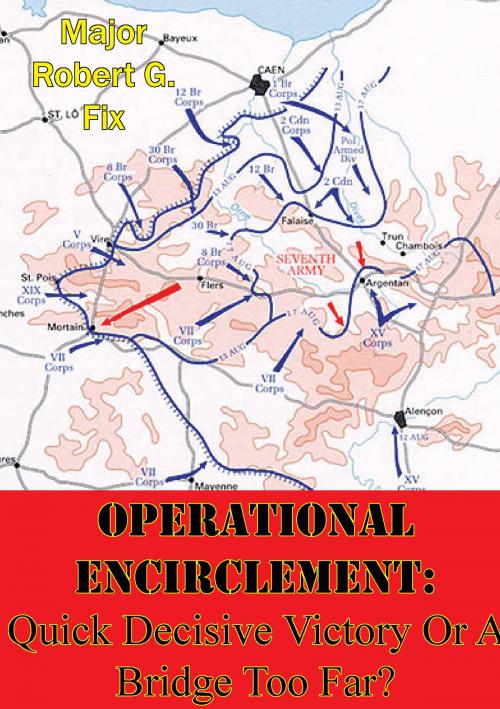Operational Encirclement: Quick Decisive Victory Or A Bridge Too Far?
Nonfiction, History, Germany, European General, Military, United States| Author: | Major Robert G. Fix | ISBN: | 9781786253187 |
| Publisher: | Lucknow Books | Publication: | November 6, 2015 |
| Imprint: | Lucknow Books | Language: | English |
| Author: | Major Robert G. Fix |
| ISBN: | 9781786253187 |
| Publisher: | Lucknow Books |
| Publication: | November 6, 2015 |
| Imprint: | Lucknow Books |
| Language: | English |
History is replete with examples of lost opportunities to decisively defeat an enemy’s army on the field of battle. All too often, tactical success has not been followed by actions to ensure operational success. This failure may be attributable to a misunderstanding of the dynamics of operational encirclement. Two case studies highlight these dynamics. The Battles of the Falaise Gap in 1944 and the Ruhr Pocket in 1945 both illustrate the difficulties operational commanders face in conducting this type of operation. In the first case, Allied commanders failed to anticipate the opportunities presented by poor operational planning and tactical execution by their German adversaries and missed an opportunity for a quick and decisive victory. In the second, Allied commanders succeeded in learning from their previous mistakes at Falaise to achieve decisive operational results during the encirclement of the Ruhr.
This monograph examines the dynamics of operational encirclement and determines what critical factors impact success or failure in achieving decisive results. It concludes that the three most critical factors which directly impact the success or failure of an operational encirclement include: the development of a flexible campaign plan, the establishment of an efficient and effective command and control infrastructure, and an ability to properly read the events on the battlefield. Based on these factors several planning considerations are identified as useful in the planning and execution of operational encirclements.
History is replete with examples of lost opportunities to decisively defeat an enemy’s army on the field of battle. All too often, tactical success has not been followed by actions to ensure operational success. This failure may be attributable to a misunderstanding of the dynamics of operational encirclement. Two case studies highlight these dynamics. The Battles of the Falaise Gap in 1944 and the Ruhr Pocket in 1945 both illustrate the difficulties operational commanders face in conducting this type of operation. In the first case, Allied commanders failed to anticipate the opportunities presented by poor operational planning and tactical execution by their German adversaries and missed an opportunity for a quick and decisive victory. In the second, Allied commanders succeeded in learning from their previous mistakes at Falaise to achieve decisive operational results during the encirclement of the Ruhr.
This monograph examines the dynamics of operational encirclement and determines what critical factors impact success or failure in achieving decisive results. It concludes that the three most critical factors which directly impact the success or failure of an operational encirclement include: the development of a flexible campaign plan, the establishment of an efficient and effective command and control infrastructure, and an ability to properly read the events on the battlefield. Based on these factors several planning considerations are identified as useful in the planning and execution of operational encirclements.

![Cover of the book Small Unit Actions [Illustrated Edition] by Major Robert G. Fix](https://www.kuoky.com/images/2014/august/300x300/9781782892526-t6wt_300x.jpg)













![Cover of the book Small Unit Actions During The German Campaign In Russia [Illustrated Edition] by Major Robert G. Fix](https://www.kuoky.com/images/2014/august/300x300/9781782892533-ASXR_300x.jpg)